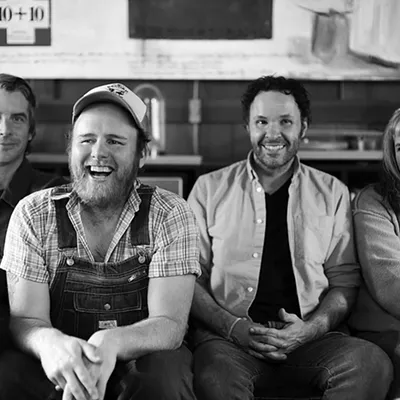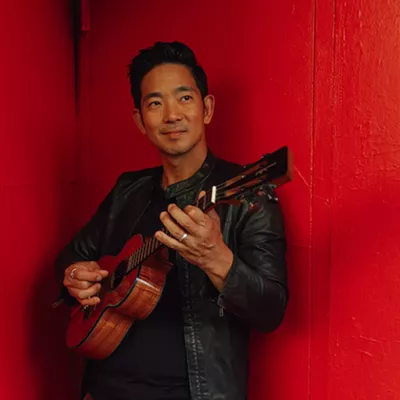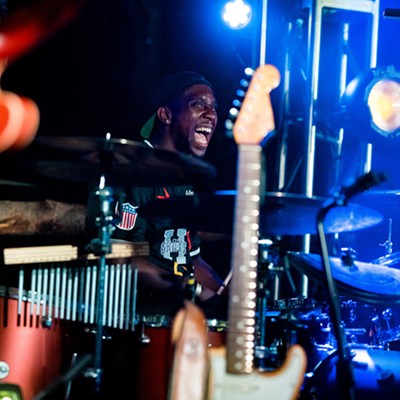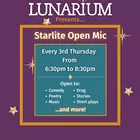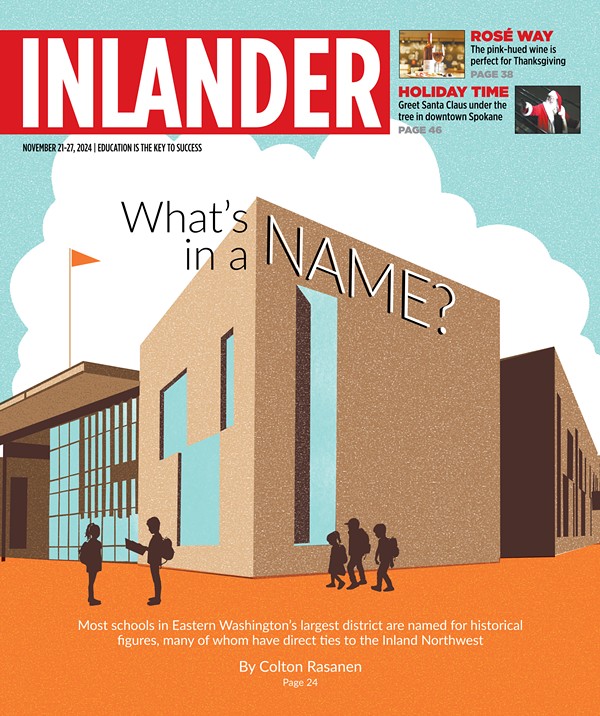Found Sound
[
{
"name": "Broadstreet - Instory",
"component": "25846487",
"insertPoint": "4",
"requiredCountToDisplay": "4"
},{
"name": "Broadstreet - Empower Local",
"component": "27852456",
"insertPoint": "8",
"requiredCountToDisplay": "8"
},{
"name": "Broadstreet - Instory",
"component": "25846487",
"insertPoint": "12",
"requiredCountToDisplay": "12"
},{
"name": "Broadstreet - Instory - 728x90 / 970x250",
"component": "27852677",
"insertPoint": "18",
"requiredCountToDisplay": "18"
},{
"name": "Broadstreet - Instory",
"component": "25846487",
"insertPoint": "5th",
"startingPoint": "23",
"requiredCountToDisplay": "24",
"maxInsertions": 100
}
]
by ELIZABETH STRAUCH & r & & r & & lt;span class= & quot;dropcap & quot; & J & lt;/span & ust about 100 miles from where Eric Anderson grew up is one of the oldest and most unusual structures in the Inland Northwest. The Cataldo Mission, or Mission of the Sacred Heart, is a unique architectural accomplishment, not only because of the celebrated cooperation between the Coeur d'Alene Indians and the Jesuit missionaries who built it in the 1850s, but also for the self-sufficient way in which it was constructed, long before we would be oohing and ahhing over sustainability. The 90-foot-long, 40-foot-wide and 30-foot-high building was made primarily of pine from the area that was cut on-site. Wooden pegs, willow saplings, wild grass, adobe and mud fill in the gaps to hold it together: Not a single nail was used. The altars were carved by hand and painted to look like marble. Chandeliers were made out of tin cans.
Growing up in Moscow, Anderson remembers going on school field trips to visit the mission. Years later, when he formed his band/pseudonym Cataldo, he had the same spirit of using what you have to create something memorable and remarkable. In his band's bio, he writes, "I want to make beautiful things using people and tools around me. I believe in circuitous, roundabout methods, trying as hard as you can, and f---ing up as much as is necessary before you get things right."
Cataldo released its first and self-produced album in 2005. Anderson was 18 at the time, and wasn't necessarily looking for anything big to come of it. "I had never made music for public consumption -- I had no aim of really releasing it," he says. At the time, the resources he had around him were few -- just four other musicians were featured, and the recording process was tedious with limited equipment. Nevertheless, once finished, the album established Anderson as a gifted songwriter, and even with sparse accompaniment, the simple layers of vocals and acoustic instrumentation built a solid framework to follow up on with his new album, Signal Flare.
Anderson has spent the last four years in St. Paul, Minnesota, and recently graduated with an English degree from Macalester College. He started working on Signal Flare in 2006, and just before he returned to Moscow for Christmas, burglars broke into his house in Minnesota and made off with the beginnings of the album. Talking about it now, Anderson seems to carry a c'est la vie attitude about it. "I don't know if it turned out for better or for worse," he says. That January, he did a short Northwest tour with California singer-songwriter Heather Frederick, and they worked at a steady pace to lay down some tracks and regain the momentum for the album.
When Anderson went about recording Signal Flare, unlike the first album, he had very specific goals in mind -- one of the biggest being to be more "in the moment" with the music. He accumulated more microphones and various hardware to allow more of the recording to happen at once, without the need for click tracks. "It's kind of a broader approach, and more meticulous, but at the same time keeping the freedom of the moment," he says. And since his first album, he's gotten to know a lot more people to contribute to the project. Signal Flare features about 15 musicians, including Shawn Neary on bass (from Seymour Saves the World and Cloud Cult, and formerly Tapes 'n Tapes). As a result, the album is brimming with brass and strings, with gang vocals and well-placed claps. The album was mixed in Minneapolis by Tucker Martine, who has worked with Sufjan Stevens, Laura Veirs and Mudhoney. Selections from the album have already popped up on KCRW's seminal radio show Morning Becomes Eclectic. The buzz has also landed Anderson in Paste Magazine.
It's easy to see why. Each track offers something different without sounding out of place -- nicely blended two-part vocal harmonies at wide intervals; straightforward banjo strumming; mildly distorted guitar. From the opening piano-driven track, "Tendon and Skin," the lyrics are clear and captivating, and that feature carries on throughout the album. On his few solo tracks, Anderson's boyish voice sounds especially intimate, singing, "Taking on my underwear, I'm sewing up the flies like they were tears / what does this brain wonder, what does this head care, if this lower body wasn't even there?" He also wonders, "How many Mennonites might feel just like this? / I'll learn German, I'll teach sermons and lose my lisp." When Frederick and Anderson pair up on tracks like "I Do" and "Tremble But Not Talk," their voices tenderly complement each other in delivering metaphors like "eyes clearer than two polished-glass test tubes," followed by echoey bass drum and vibes, plucky mandolin and pounded piano.
What truly holds Signal Flare together is the exchange between the musicians: You can hear it in the collective voices calling back in chorus to Anderson, the connectedness of the violins, the bantering of guitar, mandolin and banjo -- the "freedom of the moment" that Anderson wanted so much to achieve. If his aim was to utilize what was around him in making a great sound, Cataldo has surely benefited from outstanding resources. It's an album that will likely last for a while and continue to draw you in deeper with each listen.
Cataldo CD release with Parallax and Adam Svec at UI's Kiva Theater in Moscow, Idaho, on Friday, July 25, at 8 pm. $5. Call (208) 885-7212.
Growing up in Moscow, Anderson remembers going on school field trips to visit the mission. Years later, when he formed his band/pseudonym Cataldo, he had the same spirit of using what you have to create something memorable and remarkable. In his band's bio, he writes, "I want to make beautiful things using people and tools around me. I believe in circuitous, roundabout methods, trying as hard as you can, and f---ing up as much as is necessary before you get things right."
Cataldo released its first and self-produced album in 2005. Anderson was 18 at the time, and wasn't necessarily looking for anything big to come of it. "I had never made music for public consumption -- I had no aim of really releasing it," he says. At the time, the resources he had around him were few -- just four other musicians were featured, and the recording process was tedious with limited equipment. Nevertheless, once finished, the album established Anderson as a gifted songwriter, and even with sparse accompaniment, the simple layers of vocals and acoustic instrumentation built a solid framework to follow up on with his new album, Signal Flare.
Anderson has spent the last four years in St. Paul, Minnesota, and recently graduated with an English degree from Macalester College. He started working on Signal Flare in 2006, and just before he returned to Moscow for Christmas, burglars broke into his house in Minnesota and made off with the beginnings of the album. Talking about it now, Anderson seems to carry a c'est la vie attitude about it. "I don't know if it turned out for better or for worse," he says. That January, he did a short Northwest tour with California singer-songwriter Heather Frederick, and they worked at a steady pace to lay down some tracks and regain the momentum for the album.
When Anderson went about recording Signal Flare, unlike the first album, he had very specific goals in mind -- one of the biggest being to be more "in the moment" with the music. He accumulated more microphones and various hardware to allow more of the recording to happen at once, without the need for click tracks. "It's kind of a broader approach, and more meticulous, but at the same time keeping the freedom of the moment," he says. And since his first album, he's gotten to know a lot more people to contribute to the project. Signal Flare features about 15 musicians, including Shawn Neary on bass (from Seymour Saves the World and Cloud Cult, and formerly Tapes 'n Tapes). As a result, the album is brimming with brass and strings, with gang vocals and well-placed claps. The album was mixed in Minneapolis by Tucker Martine, who has worked with Sufjan Stevens, Laura Veirs and Mudhoney. Selections from the album have already popped up on KCRW's seminal radio show Morning Becomes Eclectic. The buzz has also landed Anderson in Paste Magazine.
It's easy to see why. Each track offers something different without sounding out of place -- nicely blended two-part vocal harmonies at wide intervals; straightforward banjo strumming; mildly distorted guitar. From the opening piano-driven track, "Tendon and Skin," the lyrics are clear and captivating, and that feature carries on throughout the album. On his few solo tracks, Anderson's boyish voice sounds especially intimate, singing, "Taking on my underwear, I'm sewing up the flies like they were tears / what does this brain wonder, what does this head care, if this lower body wasn't even there?" He also wonders, "How many Mennonites might feel just like this? / I'll learn German, I'll teach sermons and lose my lisp." When Frederick and Anderson pair up on tracks like "I Do" and "Tremble But Not Talk," their voices tenderly complement each other in delivering metaphors like "eyes clearer than two polished-glass test tubes," followed by echoey bass drum and vibes, plucky mandolin and pounded piano.
What truly holds Signal Flare together is the exchange between the musicians: You can hear it in the collective voices calling back in chorus to Anderson, the connectedness of the violins, the bantering of guitar, mandolin and banjo -- the "freedom of the moment" that Anderson wanted so much to achieve. If his aim was to utilize what was around him in making a great sound, Cataldo has surely benefited from outstanding resources. It's an album that will likely last for a while and continue to draw you in deeper with each listen.
Cataldo CD release with Parallax and Adam Svec at UI's Kiva Theater in Moscow, Idaho, on Friday, July 25, at 8 pm. $5. Call (208) 885-7212.



